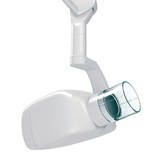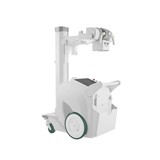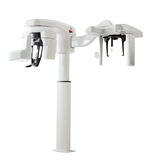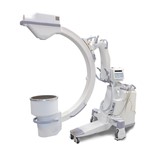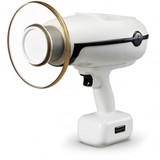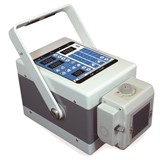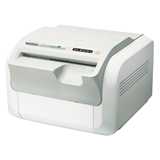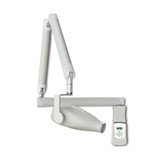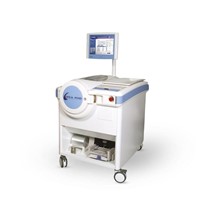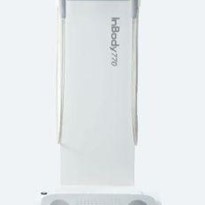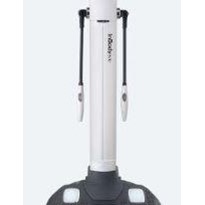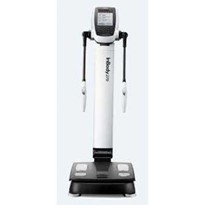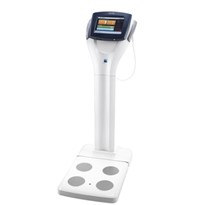First of all, there exists a hierarchy of assessment techniques that includes direct and indirect measurement. Although a direct measurement of body composition is the most accurate method, it is not an option, as it requires dissection of the body. Moving to the indirect measurement, there are many different techniques, but they are not all created equal. The closest researchers can get to a direct measurement of body composition as far as accuracy goes is by using the Multi–Compartment Model technique. In research, this indirect method is also commonly said to be the best “reference” technique.
Other indirect methods such as BOD POD and Underwater Weighing have a small individual error. These methods are considered indirect because the equations used to determine body fat from body density are only one step from the direct method. For instance, if a person’s total body density is determined (mass / volume), their relative amounts of fat and fat free masses can be determined because the known, individual densities of each compartment have been measured directly in previous cadaver analysis. DXA, Skinfold Calipers, and Bioimpedance are also indirect. They predict body fat by predicting density; however, some of these methods use other technique–specific regression equations that may or may not be published. Regression equations developed from one specific population group may not be valid for use in other population groups, leading to poor individual agreements between the investigated and the reference method.
Multi–Compartment Model (MCM) - Reference Technique
Principles
The Multi-Compartment Model used to measure body composition requires a combination of measurement
methods. The following is a description:
- Determination of Total Body Water (TBW) by using deuterium or 18O labeled water dilution.
- Body Mass.
- Body Volume by air displacement (BOD POD) or Underwater (UWW) Weighing.
- Bone Mineral Content by Dual-Energy X-Ray Absorptiometry (DXA).
The reason a Multi-Compartment Model would be preferred over a Two-Compartment Model (although a TwoCompartment model is a fair and accurate determination), is that it provides additional nutritionally-important information, and a more accurate measurement for individuals whose bone mineral content and total body water are outliers of the predicted (or average) ranges.
COSMED Position
The closest science can get to cadaver analysis in accuracy is the Multi-Compartment Model. We consider this to be the best reference technique. It is likely different results will be obtained from techniques shown not to compare favorably with multi-compartment models.
Methods comparable to MCM
Based on research, what methods are comparable to the Multi-Compartment Model?
Underwater Weighing (UWW)
Principles
- Underwater Weighing estimates body composition from body density: D = Mass/Volume
- Mass - Measured on a scale on land.
- Volume - Based on Archimedes’ Principle that states when a body is immersed in a fluid, body volume is equal to the loss of weight in the water.
- Computing Db to %BF - Established equations are used that incorporate measured densities of fat and fat-free mass, such as:
- density of fat = 0.9007 g * cm-3
- density of fat-free = 1.100 g * cm-3
- The more dense a body is, the lower the percentage of body fat; the less dense a body is, the higher the body fat.
- The subject must exhale all air as head is lowered under water.
- Residual Volume (RV) must be measured to obtain most accurate results (nitrogen, oxygen, or helium dilution or nitrogen washout technique).
- The most accurate method for measuring RV is to obtain the measurement at the same time the subject is submerged in the tank, while their body volume is being measured, as opposed to measuring RV when the subject is outside of the tank.
- Residual Volume is then subtracted from the Total Body Volume measurement.
COSMED Position
Percent fat measurements using the Underwater Weighing technique are not statistically different than the MultiCompartment Model when proper protocol is followed (i.e., measured Residual Volume).
Air Displacement Plethysmography (BOD POD)
Principles
- Estimates body composition from body density: D = Mass/Volume
- Mass – Measured on a scale on land
- Volume – Measured by air displacement plethysmography in the BOD POD chamber
- Computing Density to %BF – Established equations are used that incorporates measured densities of fat and fat-free mass. For example:
- density of fat = 0.9007 g * cm-3
- density of fat-free = 1.100 g * cm-3
- The more dense a body is, the lower the percentage of body fat; the less dense a body is, the higher the body fat.
- Subject can breathe normally during the test.
- Thoracic Gas Volume (TGV) is accounted for instead of RV.
COSMED Position
Percent fat results obtained form the BOD POD have not been shown to be statistically different than results from Multi-Compartment Models.
Summary
Because the BOD POD and Underwater Weighing compare favorably with Multi-Compartment Model results, they also compare favorably with each other when proper protocol is followed.
Methods NOT comparable to MCMC
Based on research, what methods are NOT as comparable to the Multi-Compartment Model?
Dual-Energy X-Ray Absorptiometry (DXA)
Principles
- Dual Energy X-Ray Absorptiometry or “DXA” (previously DEXA) is a means of measuring Bone Mineral Density (BMD).
- Two x-ray beams with differing energy levels are aimed at the patient’s bones.
- When soft tissue absorption is subtracted out, the BMD can be determined from the absorption of each beam by bone.
- DXA is the most widely used and most thoroughly studied bone density measurement technology.
- The DXA technique involves a small amount of radiation, and is usually administered by a department qualified to use radiation for medical imaging.
- Subject thickness is assumed.
COSMED Position
While DXA does a good job of measuring bone density, the measurement of body fat is not as well established according to the research. Percent fat readings measured by DXA have not been shown to agree favorably with the Multi-Compartment Model and, therefore, cannot be considered a gold standard.
Skinfold Calipers
Principles
- A small, hand-held device called Skinfold Calipers is used to measure the thickness of fat immediately below the skin’s surface, which is also called subcutaneous fat.
- Usually 3 to 12 locations are chosen to measure. The most common sites are: suprailiac, anterior thigh, triceps, and subscapular.
- These 3 to 12 local fat measurements are used to predict the overall fat content of the entire body, however, significant errors can result from this approach, because people deposit fat in different areas, and about half of the fat content of the body is internal, which skinfold calipers can’t measure.
- Once fatfolds are measured they are put into one of hundreds of different population-specific or generalized equations to determine BF% (see Appendix II).
- Because of this, the accuracy of skinfolds on an individual basis is not very high, with research studies indicating errors of up to ±8%. Example: If someone is really 20% fat, Skinfold Calipers could measure the person between 12 and 28% fat.
- The best application of Skinfold Calipers is to determine if subcutaneous fat is increasing or decreasing, but not for predicting total body fat.
COSMED Position
With regards to overall body fat, body fat measured by Skinfold Calipers has consistently been shown to be inaccurate and unreliable. There is little research comparing Skinfold percent fat measurements and MultiCompartment measurements because the principles and assumptions are completely different. For this reason, Skinfold measurements should also not be compared to methods such as Underwater Weighing and BOD POD.
Bioimpedance (BIA)
Principles
- There are a number of Bioimpedance devices that pass a small, alternating electric current through the body, and the resistance to that current indicates the amount of water in the body. This is, in turn, related to the amount of lean tissue in the body.
- The opposition of the flow is measured.
- Total body water is estimated.
- Fat-free mass is predicted from Total Body Water (TBW) estimates.
- To estimate TBW from the observed resistance-to-current flow, two assumptions are used.
- The whole body can be modeled as an isotropic cylindrical conductor, with its length proportional to the subject’s height.
- The reactance term contributing to the body’s impedance is small, such that resistance can be considered equivalent to impedance.
- Under these conditions, the impedance index (Height2/R) is assumed to be proportional to the volume of TBW.
- A large fat–free mass compartment = less resistance to current.
- A large fat compartment = more resistance to current.
COSMED Position
Bioimpedance has not been shown to compare favorably with the Multi-Compartment Model; therefore, cannot be compared to methods such as Underwater Weighing and BOD POD. In addition, the summarized literature review indicates “at the individual level, BIA estimate of body composition (including FFM and %BF) can not be used with any degree of confidence” (57).
Summary
DXA, Skinfolds, and Bioimpedance results have shown to be statistically different than Multi-Compartment Model results and should not be compared to other technologies using the principle of densitometry such as Underwater Weighing and BOD POD.













-160x160-state_article-rel-cat.png)





